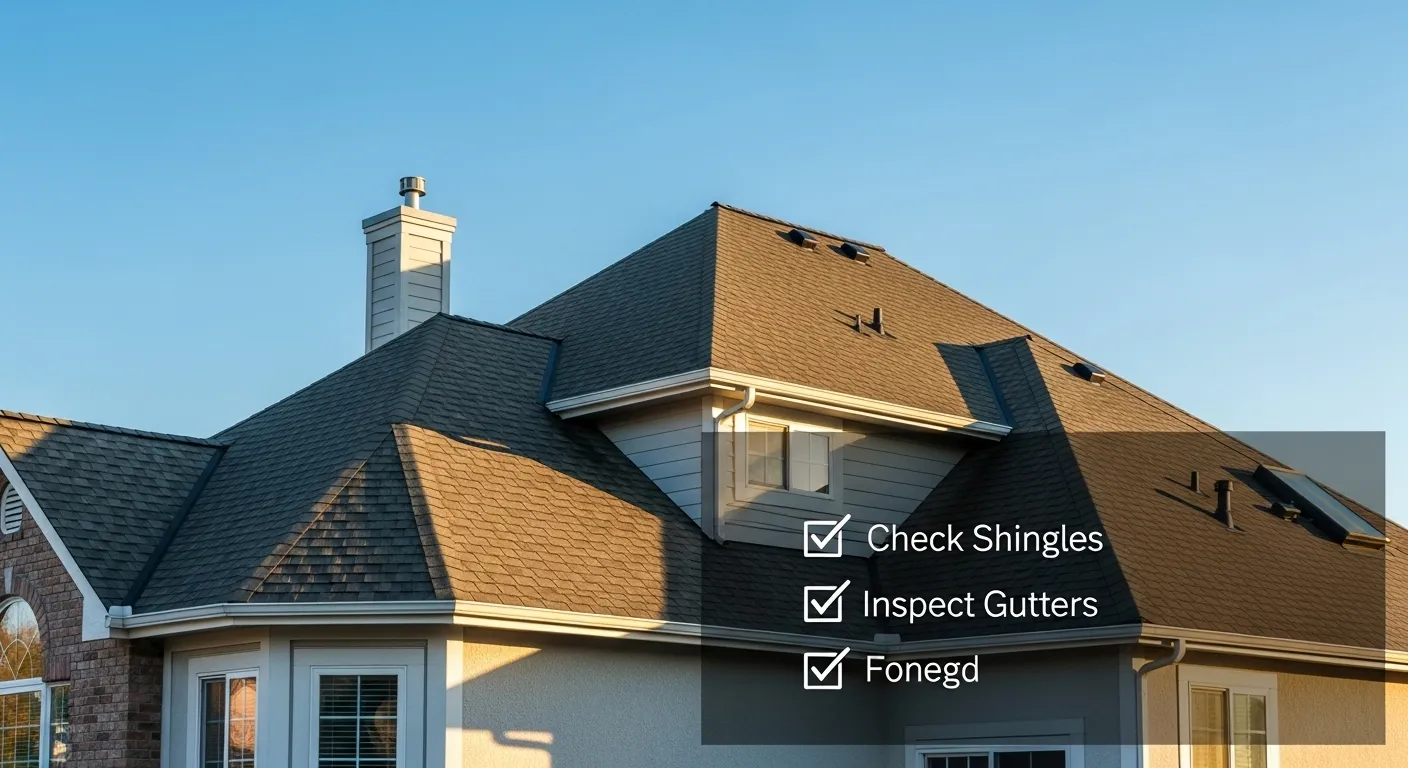Your roof protects your home from rain, wind, and sun. A quick check can catch problems before they grow. This guide walks you through what to look for. Follow these steps twice a year, in spring and fall. It helps keep your family safe and cuts repair costs. If you spot big issues, call a pro right away.

Why Check Your Roof Often
Roofs last 20 to 30 years with care. Weather wears them down over time. Storms, heat, and ice cause cracks or leaks. Small fixes now prevent water damage inside. Water stains on ceilings signal trouble. Poor ventilation leads to mold. Regular checks spot these early. They also boost home value. Link this to your overall home care routine, like in our home repairs maintenance guide.
Homeowners ask: How often should you inspect your roof? Aim for two times a year. After big storms, check right away. What are common signs of roof damage? Look for missing pieces or dark spots inside.
Gather Tools and Stay Safe
Safety comes first. Use a sturdy ladder. Wear non-slip shoes and gloves. Work on dry days. Have someone spot you. Binoculars help from the ground. A flashlight aids attic views. Note issues with photos. See our must-have tools for new homeowners for more on basics like ladders.
Never climb if your roof is steep or wet. Falls hurt. If unsure, hire help. Pros use harnesses and check hard-to-reach spots.
Ground-Level Exterior Check
Start from the yard. Walk around the house. Look up at the whole roof. This keeps you safe. Check for:
- Sagging areas. They mean weak spots.
- Missing or broken shingles. Count how many.
- Curling or buckling edges on shingles.
- Dark streaks from algae or moss.
- Branches rubbing the surface.
- Chimney cracks or loose bricks.
Bird nests or debris build up. Clear them to avoid clogs. Gutters overflow if blocked. This erodes the foundation.

Close-Up Roof Surface Inspection
If your roof is low and safe, climb up. Otherwise, use binoculars. Focus on shingles or tiles. Asphalt shingles are common. Check for:
- Granule loss. Bare spots show on the ground after rain.
- Cracked or split pieces.
- Loose nails popping out.
- Bald patches from wear.
For metal roofs, hunt rust or dents. Tile roofs may have chips. Flat roofs pool water. Drain it fast. These issues let water in. Fix small ones yourself with sealant.
Homeowners often wonder: Can I inspect my own roof? Yes, for basics. But pros see more.
Inspect Flashing and Attachments
Flashing seals edges around chimneys, vents, and skylights. It’s metal or rubber. Look for:
- Rust or corrosion.
- Cracks in seals.
- Loose or missing pieces.
- Gaps letting water through.
Vents need tight boots. Chimneys require sound mortar. Solar panels or antennas must sit firm. Bad flashing causes most leaks. Recaulk if needed.

Check Gutters and Downspouts
Gutters catch runoff. Clogged ones spill water. Inspect for:
- Debris like leaves or twigs.
- Rust holes or dents.
- Loose brackets.
- Downspouts aimed away from the base.
Clean them now. Sagging gutters pull on the roof. Straighten or replace. Good flow prevents basement floods.
Attic and Interior Inspection
Go inside the attic. Use a light. Crawl carefully. Signs of trouble include:
- Water stains on rafters or walls.
- Mold or mildew smells.
- Wet insulation.
- Daylight peeking through cracks.
- Sagging decking between beams.
Check vents for blockages. Fans from kitchen or bath must vent outside. Poor air flow traps moisture. It rots wood. Add baffles if needed. For more on inside care, see our seasonal home organization guide.
People also ask: What is included in a roof inspection checklist? This covers surface, seals, drainage, and inside signs.

Common Roof Problems and Quick Fixes
Leaks top the list. They start small. Fix with patches. Shingle wear comes from age. Replace singles under 10 affected. Algae needs bleach wash. Ice dams in winter lift edges. Heat cables help. Ventilation fixes many woes. Open soffit vents. For pest control, seal gaps. Learn more from the National Roofing Contractors Association on standards.
Address these to avoid big bills. A full replace costs thousands.
When to Call a Professional Roofer
DIY works for minor spots. Call experts for:
- Over 20% shingle damage.
- Structural sags.
- Big leaks or mold.
- After hail or wind storms.
Pros use drones or lifts. They spot hidden rot. Get quotes from licensed firms. Insurance may cover storm fixes. Act fast to stop spread.
Seasonal Tips for Roof Care
Spring: Clear winter debris. Check storm damage.
Summer: Watch heat warping. Trim trees.
Fall: Clean leaves. Prep for cold.
Winter: Melt ice safely. Avoid salt on shingles.
Tie checks to your year-round plan. It keeps everything in order.
This checklist gives you control. Spot issues early. Protect your home. Save time and cash. If problems persist, pros handle the rest.
